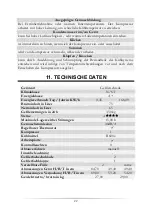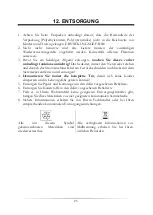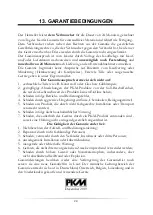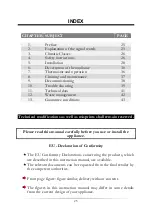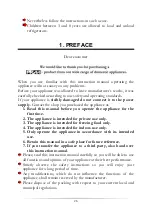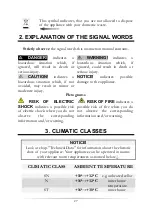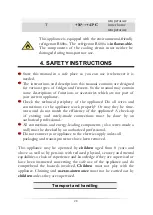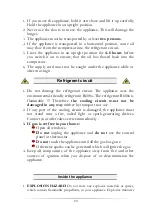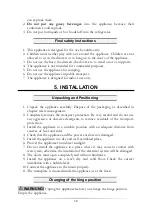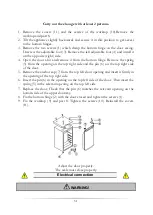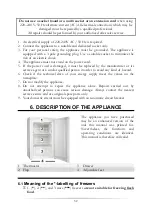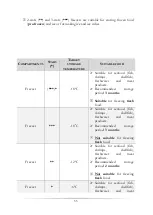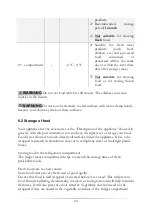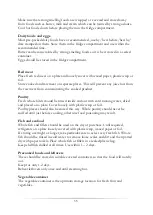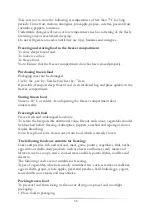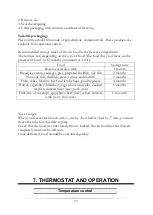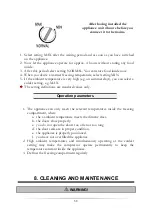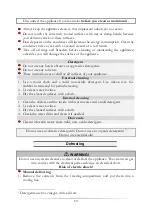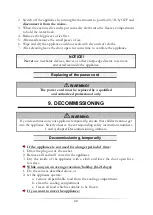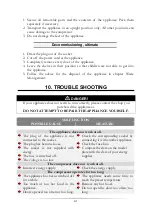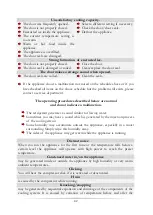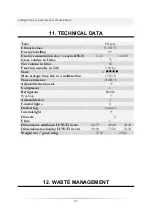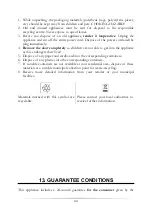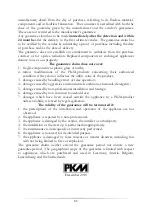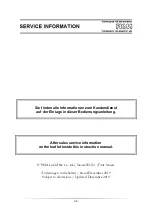
36
Take care not to store the following at temperatures of less than 7°C for long
periods: Citrus fruit, melons, aborigines, pineapple, papaya, curettes, passion fruit,
cucumber, peppers, tomatoes.
Undesirable changes will occur at low temperatures such as softening of the flesh,
browning and/or accelerated decaying.
Do not refrigerate avocados (until they are ripe), bananas and mangoes.
Freezing and storing food in the freezer compartment
To store deep-frozen food.
To make ice cubes.
To freeze food.
Note: Ensure that the freezer compartment door has been closed properly.
Purchasing frozen food
Packaging must not be damaged.
Use by the „use by /best before/best by/
‟
date.
If possible, transport deep-frozen food in an insulated bag and place quickly in the
freezer compartment.
Storing frozen food
Store at -18°C or colder. Avoid opening the freezer compartment door
unnecessarily.
Freezing fresh food
Freeze fresh and undamaged food only.
To retain the best possible nutritional value, flavour and colour, vegetables should
be blanched before freezing. Aubergines, peppers, zucchini and asparagus do not
require blanching.
Note: Keep food to be frozen away from food which is already frozen.
The following foods are suitable for freezing:
Cakes and pastries, fish and seafood, meat, game, poultry, vegetables, fruit, herbs,
eggs without shells, dairy products such as cheese and butter, ready meals and
leftovers such as soups, stews, cooked meat and fish, potato dishes, soufflés and
desserts.
The following foods are not suitable for freezing:
Types of vegetables, which are usually consumed raw, such as lettuce or radishes,
eggs in shells, grapes, whole apples, pears and peaches, hard-boiled eggs, yogurt,
soured milk, sour cream, and mayonnaise.
Packing frozen food
To prevent food from losing its flavour or drying out, place food in airtight
packaging.
1. Place food in packaging.

